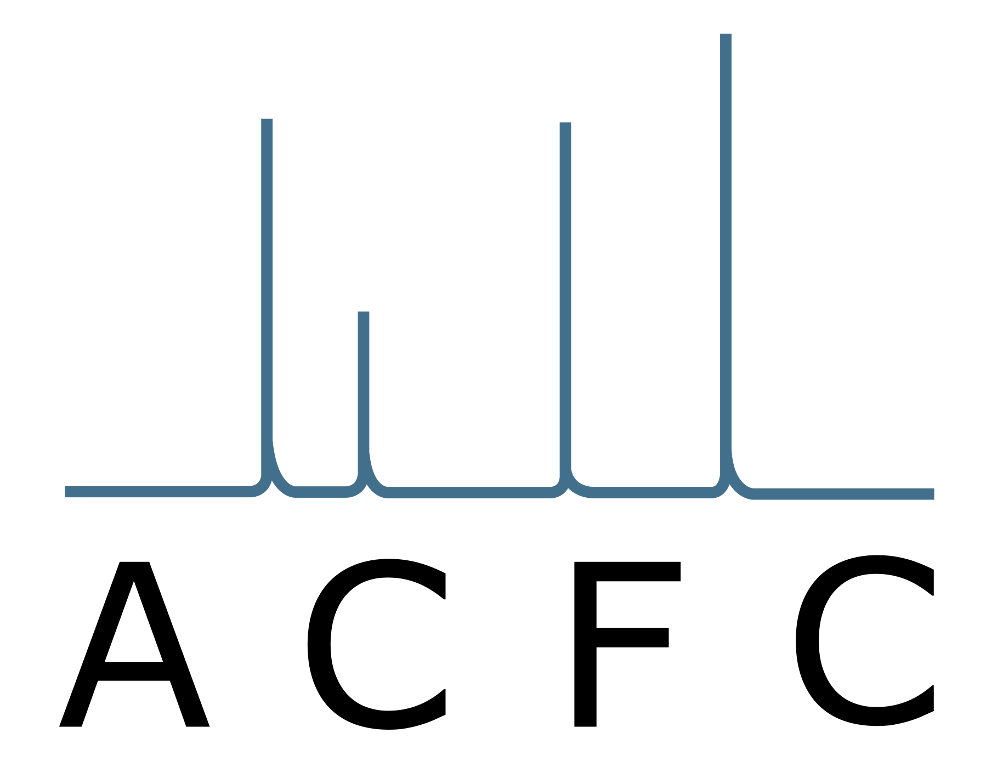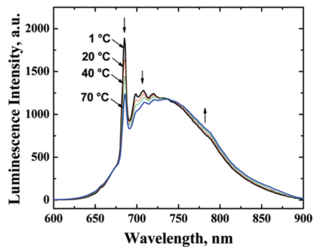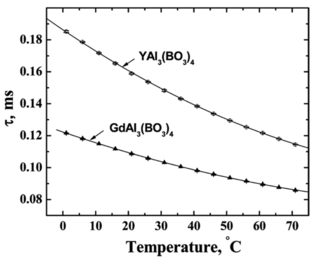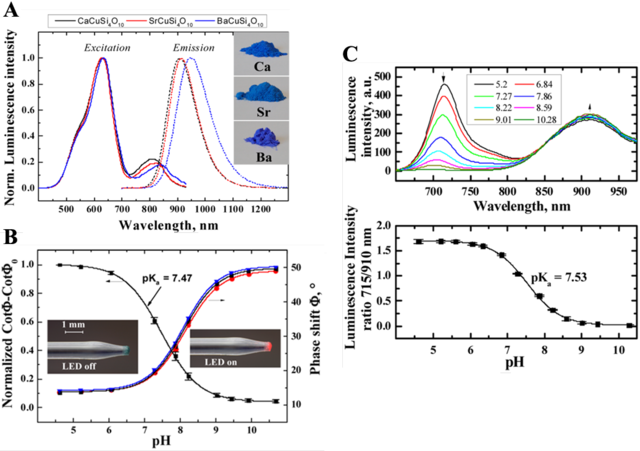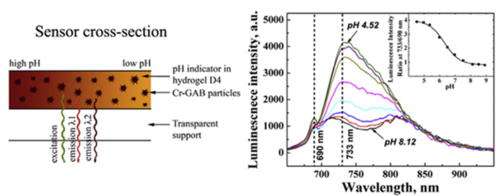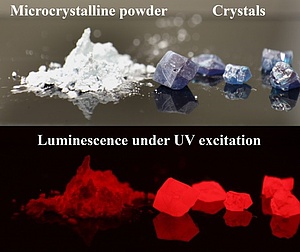
Inorganic phosphors represent an interesting alternative to molecular (metal)organic indicators. Compared to the latter, they feature very high chemical and photochemical stability and are inert to most potentially interfering species (e.g. oxygen). So far, most of the phosphor materials have been designed for lightning applications and application in optical sensor materials is comparably rare. A large group of inorganic phosphors has been used for optical temperature measurement (thermographic phosphors) but the properties are often far from being optimal (short wavelength absorption and emission, low brightness, moderate temperature coefficients). Therefore, one of the focuses of the research of the group is preparation of advanced phosphor materials for sensing applications. Thermographic phosphors for measurement at ambient conditions and phosphors as reference materials (ratiometric 2-wavelength or dual lifetime referencing) are of particular interest.
Meeting the demand of stable and sensitive temperature probes, we presented a new temperature-sensitive phosphor based on chromium(III)-activated yttrium aluminium borate (YAl3(BO3)4, Cr-YAB). [1] The phosphor can be excited in both blue and red-part of the spectrum and emits in NIR. The luminescence intensity is virtually independent on temperature, but the decay time is highly temperature-dependent, thus making the phosphor suitable for lifetime read-out (Fig. 1). At ambient conditions, the temperature sensitivity is significantly higher than that of most thermographic phosphors, e.g. ruby or manganese(IV)-doped magnesium fluorogermanate. The thermographic phosphor can either be prepared as a single crystal or as a microcrystalline powder via convenient combustion synthesis. The temperature sensitivity is much lower if yttrium was substituted for gadolinium (Fig. 1). This enables application of chromium(III)-doped gadolinium borate as an inert reference material, for example for ratiometric 2-wavelength measurement or for DLR measurements. [2] Cr-YAB was applied in a composite material for simultaneous sensing of temperature and pH.
Egyptian blue (calcium copper silicate) and Han blue (barium copper silicate) have been known as colored pigments for several thousand years. We demonstrated that the phosphors are very promising for sensing applications as reference materials. [3] In fact, they exhibit strong absorption in broad spectral range and strong emission in NIR part of the spectrum (Fig. 2). The luminescence decay time is in microsecond time domain which makes the phosphors ideally suitable for DLR referencing of NIR-emitting fluorescent probes. Alternatively, ratiometric 2-wavelength measurement can also be used. Other features include convenient synthesis from cheap starting materials and possibility of modification of the surface via silanization. In fact, the surface of the particles can be protected and better dispersibility in various polymers rendered by the modification using readily available chlorosilanes. Finally, we also showed that the phosphors possess some temperature sensitivity at ambient conditions, which can be used for temperature compensation of optical sensors, albeit with moderate resolution. The sensitivity increases at higher temperature, making the phosphors promising as high temperature optical probes. We also demonstrated that the photophysical properties and temperature sensitivity can be fine-tuned by varying substituting calcium in calcium copper silicate to strontium or barium.
